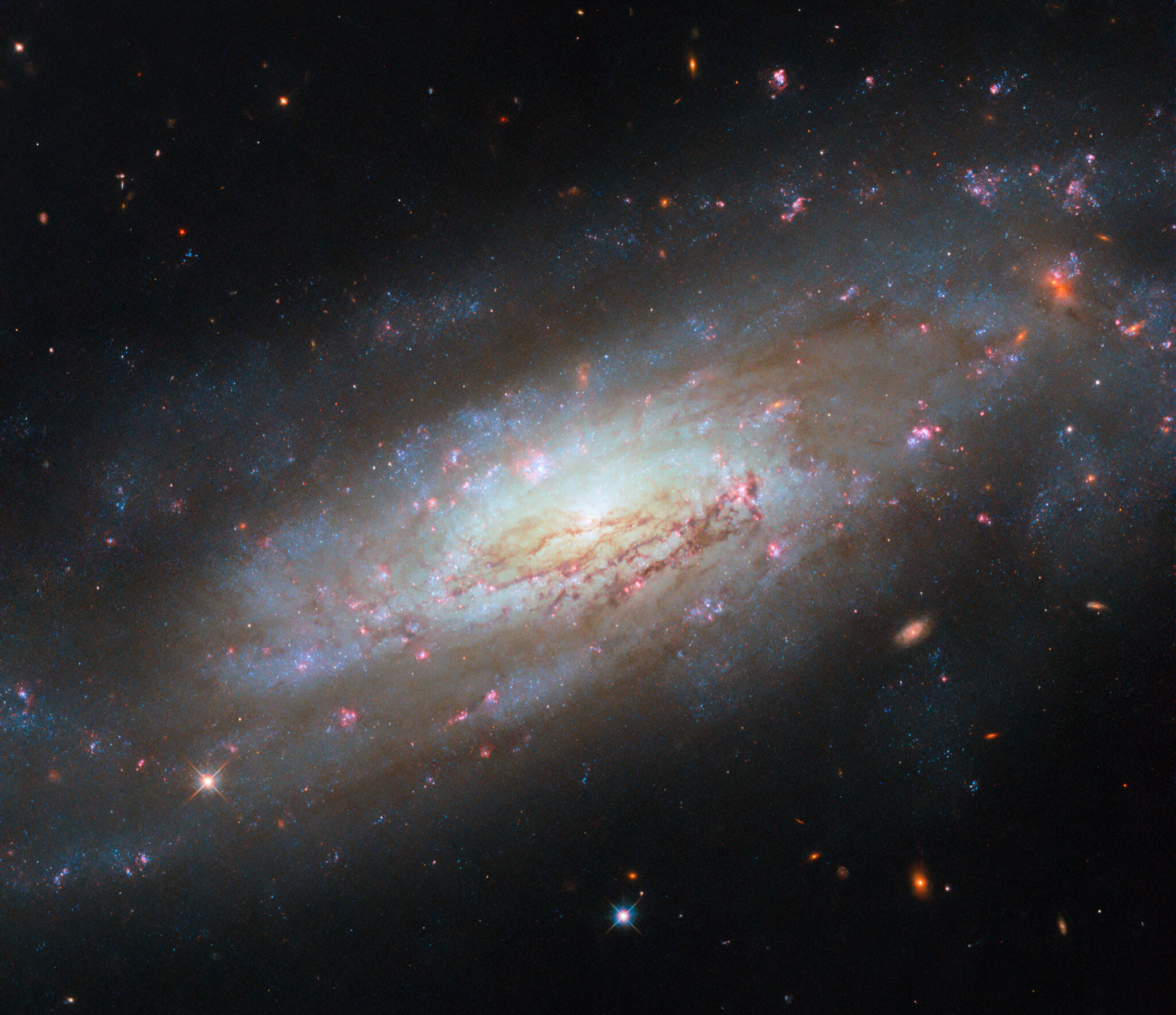The accompanying team of the Hubble mission has published a new image. It shows the spiral galaxy NGC 4951.

NGC 4951 is located 49 million light-years away from Earth toward the constellation Virgo. The Hubble photo clearly shows the spiral arms twisted around its bright core. They are covered with pink spots corresponding to regions of active star formation, as well as young blue stars and dark dust clubs.
The data used to create this image was obtained by Hubble as part of a program to study the movement of matter and energy in nearby galaxies. Galaxies are constantly going through a cycle of star formation, during which the gas in them forms molecular clouds. They form new stars, which then disperse the clouds from which they formed with powerful radiation or stellar winds in a process called feedback. The remaining gas forms new clouds elsewhere. This cycle of moving matter and energy determines how fast a galaxy forms stars and how fast it burns its gas reserves — that is, how it evolves during its lifetime.
NGC 4951 is also a Seyfert galaxy. This is the name given to galaxies that have a very bright and active nucleus. Astronomers estimate that about 10% of galaxies in the universe are Seifert galaxies.
Earlier we told you how astronomers used data from the Hubble and James Webb telescopes to create a visualization of the famous Pillars of Creation.
According to esahubble.org


